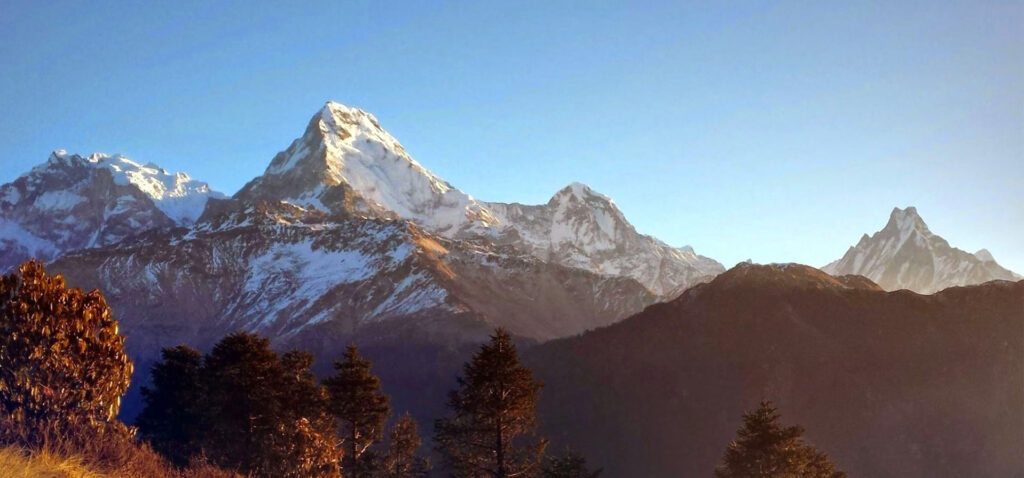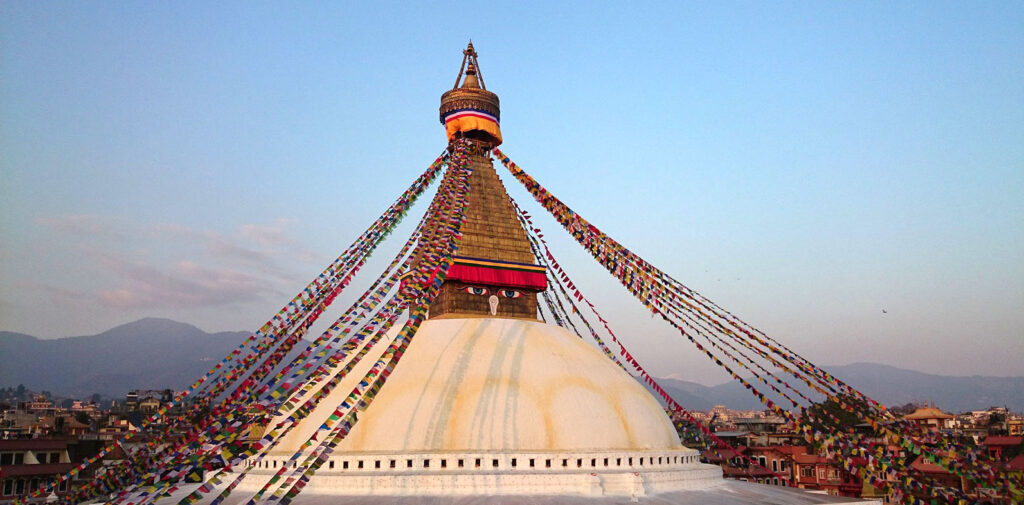Nepal Travel Guide

Nepal’s unique topography and culture have long captivated the imagination of travelers. Sandwiched between the Himalayas and the Indian plains, this tiny country makes up for what it lacks in size with its staggering natural beauty. For trekkers in particular, the mountains of Nepal offer some of the most exciting landscapes on the planet. If you’re thinking of planning a trip to Nepal, you might be looking to find out a little about the country, its people, the visa process, and other pre-departure information. The Nepal government ensures safety for tourists by mandating the hiring of a trekking guide for most trekking sites, addressing safety concerns in remote areas.
Yulkor – Himalayan Adventure Tour Company has one-stop Nepal travel guide for you to help you get started. You may select one of our outstanding travel packages in Nepal to start a holiday. Consider enhancing your Nepal itinerary with diverse travel experiences such as a safari in Chitwan National Park or homestay experiences to gain a broader perspective of Nepal’s unique landscapes and local culture.
Why Visit Nepal
Nepal is a country that offers a unique blend of natural beauty, rich cultural heritage, and adventure activities. From the majestic Himalayan mountains to the lush green forests and wildlife reserves, Nepal is a paradise for nature lovers and adventure seekers. The country is home to eight of the ten highest peaks in the world, including Mount Everest, the highest peak in the world. Nepal is also a country with a rich cultural heritage, with a history dating back over 2,500 years. The country is home to numerous ancient temples, monasteries, and palaces, which are a testament to its rich cultural heritage.
Language and Culture
The official language of Nepal is Nepali. If you’re planning to travel beyond Kathmandu, you might want to bring a phrase book with you. Part of the reason many experienced trekkers are accompanied by guides, even on easier routes, is that English is not widely spoken outside of the cities. While you should have no trouble meeting other travelers or staff at tourist sites and who speak English, you won’t have much luck communicating with the locals if you don’t know a few sentences. You’ll be surprised just how useful even simple words like ‘thank you’ dhanyabād and ‘hello’ namaskāra can be!
The population of Nepal is primarily Hindu, but you will also find a large number of Buddhists, Muslims, and Christians. When visiting the country’s famous Buddhist monasteries and temples (Check Temples & Tigers Tour), keep note that the photographing of religious figures in such places is strictly prohibited. Similarly, aware planning on purchasing antiques in-country, you will need special permission to transport them back home. Our Nepal travel guide never let you down on such tips before and after.
When to Visit Nepal
The best time to visit Nepal depends on the activities you have planned. The country has four distinct seasons: spring, summer, autumn, and winter. Spring (March to May) and autumn (September to November) are the best seasons to visit Nepal, as the weather is mild and pleasant, making it ideal for trekking and sightseeing. Summer (June to August) is the monsoon season, and it’s not recommended to visit Nepal during this time, as the roads and trekking trails can be slippery and prone to landslides. Winter (December to February) is the best time to visit Nepal if you’re interested in skiing or snowboarding.
Travel Guide on Domestic Flights, Transportation and Accommodation
As for arriving, Nepal has only one international airport, Tribhuvan International Airport, which is located in the capital city of Kathmandu. Tribhuvan International Airport serves as the primary international gateway to Nepal, offering various transportation options such as taxis and shuttle buses to get to Kathmandu. All other airports service only domestic flights. Once you’ve arrived to Kathmandu, you can get around the city by taking metered rickshaws or taxis. Leaving the city, you will find long-distance buses to the most popular destinations. Though the roads are mountainous, they are in good condition. And you can expect most destinations to be easily accessible by road. You can also hire drivers to transport you via a private car. We also recommend to read article on how to plan a trip to Himalayas on your holiday.
There is no shortage of hotels and homestays, depending on your preferences. While many places still have limited access to WiFi, internet cafes are common throughout Kathmandu and even farther out.

Currency and Tribhuvan International Airport
It is easy to find ATMs and businesses in the city which accept cards (Visa, MasterCard, American Express), but less-so in rural areas. If you are considering trekking (Check Everest Base Camp Trekking), you will surely need cash. We recommend withdrawing money while still in your home country. And converting it to Nepalese rupees prior to departure as the safest choice. In Kathmandu, support options for both transferring money include Western Union and traveler’s checks. Plan a trip to Nepal for what it expected.
Travel Guide on Tourist Visa and Permits
Nepal offers on-arrival tourist visas at all international points of entry for almost every nationality. The visa is applied for, paid for, and provided at the point of entry. This means that in most cases no advanced planning or application is needed. Visa fees are 30 USD for 15 days, 50 USD for 30 days, and 125 USD for 90 days. For a list of countries whose citizens must acquire a visa prior to arrival, visit the Nepali government’s Department of Immigration website at https://www.immigration.gov.np/page/tourist-visa.
This website also provides information on eligibility for Gratis Visas and visa extensions. Note that you may require different trekking permits for travel to different areas. Namely, if you are planning to travel to rural municipalities, restricted areas (such as Upper Mustang), or conservation areas (like Annapurna). Trekking permits can vary significantly in cost depending on the location, with more preserved terrains such as Upper Mustang and Dolpo having higher charges. You may need to secure a Trekking Information Management System (TIMS) card either through your tour operator or the Tourist Service Center in Kathmandu, as well as pay for area-specific entry permits. Be sure to have a stack of passport-sized photos on hand to ease the process if you’re wanting to visit multiple areas. This Nepal travel guide has all crucial information above and keep in mind while travelling in Nepal. Contact us if you have any questions rather than the compiled one-stop guide for travelling in Nepal.
Safety and Precautions
Nepal is generally a safe country to visit, but as with any country, there are some safety precautions you should take. Make sure to research your destination thoroughly and stay informed about local conditions. Be aware of your surroundings, especially in crowded areas, and keep an eye on your belongings. Avoid traveling alone at night, especially in rural areas, and use reputable taxi services or ride-sharing apps. Be respectful of local customs and traditions, and dress modestly when visiting temples or monasteries.
Trekking in Nepal
Trekking is one of the most popular activities in Nepal, and the country offers some of the most spectacular trekking trails in the world. The Everest Base Camp Trek, the Annapurna Base Camp Trek, and the Langtang Valley Trek are some of the most popular trekking trails in Nepal. Make sure to research your trekking trail thoroughly and hire a reputable guide or join a guided tour. Be prepared for altitude sickness, and make sure to ascend gradually and drink plenty of water. Bring warm clothing, as the temperature can drop significantly at high altitudes.
Things to Do in Nepal
Nepal offers a wide range of activities and things to do, from trekking and hiking to wildlife safaris and cultural tours. Visit the Chitwan National Park, a UNESCO World Heritage Site, and go on a wildlife safari to spot rhinos, tigers, and elephants. Take a domestic flight to Lukla and trek to the Everest Base Camp, or visit the ancient city of Bhaktapur and explore its narrow streets and temples. Go mountain biking in the Himalayas, or take a scenic flight over the mountains for a breathtaking view. Visit the Kathmandu Valley, a UNESCO World Heritage Site, and explore its ancient temples and monasteries.
Frequent questions and answers about travelling in Nepal and Everest Base Camp Trek
Do I need a PCR test to travel to Nepal?
In March 2022, Nepal removed barriers to on-arrival entries for unvaccinated travelers. While you still need a 72-hour negative PCR test result to board the plane and be eligible for the on-arrival visa, you do not need to present proof of vaccination.
Do I need a permit to travel to rural municipalities?
Yes, you may require different permit for restricted areas such as Upper Mustang, or conservation areas like Annapurna.
Do I need TIMS car for trekking in Nepal?
You may need to secure a Trekking Information Management System (TIMS) card either through your tour operator, or the Tourist Service Center in Kathmandu, as well as pay for area specific entry permits. Happily, the fees for these permits are highly affordable.
What should I prepare to visit multiple areas?
Be sure to have a stack of passport-sized photos on hand to ease the process if you’re wanting to visit multiple areas.
What are some recommendations for visiting Nepal?
Visiting Nepal offers rich cultural experiences and unforgettable wildlife adventures. Travelers can explore diverse offerings from the bustling streets of Kathmandu to the serene landscapes of Pokhara. It’s important to practice responsible tourism, especially in the aftermath of natural disasters, to help preserve the beauty and culture of Nepal for future visitors.
Useful internal links: Tibet travel permit and group visa from Nepal | Tibet Faqs | About Bhutan

